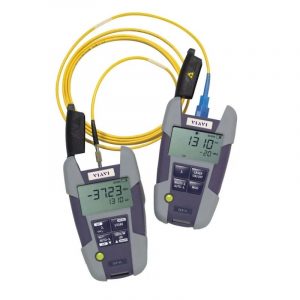The Duty of Optical Fiber Screening in Ensuring Quality and Efficiency in Connection Solutions
In today's rapidly progressing digital landscape, the value of optical fiber screening can not be overstated, as it offers as a foundation for guaranteeing the top quality and performance of connectivity remedies. By utilizing a range of screening methodologies, consisting of OTDR and loss analyses, organizations can proactively recognize and mitigate potential network issues that might prevent efficiency. Moreover, normal testing not just aligns with sector criteria yet additionally leads the means for improved information transmission. As technology continues to advancement, the future of optical fibre testing poses fascinating difficulties and opportunities that merit closer examination.
Significance of Optical Fiber Testing
The relevance of optical fibre testing can not be overstated in ensuring the integrity and performance of interaction networks. As the backbone of modern telecoms, optical fibers facilitate high-speed information transmission, making their reliability crucial to functional success. Checking serves as a proactive step to recognize potential problems such as signal loss, attenuation, and physical damages, which can compromise network performance.
Normal testing permits for the verification of setup high quality and the detection of problems that might influence information honesty - optical fibre diameter analyser. By utilizing strenuous screening methods, network drivers can mitigate the risks linked with network failures, consisting of downtime and financial losses. Optical fibre screening makes sure compliance with market requirements and regulations, improving the overall quality of service supplied to end-users.
Ultimately, the methodical analysis of optical fibers adds to the longevity and effectiveness of communication systems. It makes it possible for stakeholders to make enlightened decisions relating to maintenance, upgrades, and troubleshooting. In a landscape where information is progressively crucial, prioritizing optical fibre screening is important to maintaining robust and reliable connectivity remedies, thereby supporting the demands of modern electronic environments.
Kinds of Optical Fibre Tests
Various screening approaches are utilized to ensure the capability and reliability of optical fibers within communication networks. These examinations can be extensively categorized right into two primary kinds: setup examinations and maintenance tests.
Installation examinations are conducted quickly after the setup of optical fibre wires to validate their performance and stability - fibre testing equipment. The most usual installation examinations consist of Optical Time-Domain Reflectometry (OTDR) tests, which assess the top quality of the fibre by identifying faults or breaks, and end-to-end loss examinations, which gauge the overall optical loss from one end of the fiber to the various other
Maintenance examinations, on the other hand, are executed periodically to make certain recurring performance and identify prospective issues over time. These consist of aesthetic evaluation, which look for physical damages or inappropriate installments, and connection tests, which confirm that the signal can go through the fibre without disruption.
Furthermore, advanced tests such as Polarization Mode Diffusion (PMD) and Chromatic Dispersion (CD) tests can be conducted to review the fibre's efficiency under different conditions. By employing these diverse testing methods, service technicians can maintain high standards of high quality and dependability in optical fibre networks.
Benefits of Regular Evaluating
Routine testing of optical fibers plays a vital duty in maintaining the total efficiency and dependability of interaction networks. By performing normal assessments, organizations can make sure that their fibre optic installments fulfill sector criteria and operate effectively. This positive approach aids to identify possible weaknesses and degradation over time, enabling prompt treatments before issues escalate.

Cost-effectiveness is another advantage. By resolving small problems early, organizations can prevent the high expenses related to significant repairs or system failings. Regular testing additionally fosters compliance with regulative demands, ensuring that the network sticks to required safety and performance standards.
Common Issues Recognized
Recognizing usual concerns in optical fiber networks helpful site is essential for maintaining optimal performance and dependability. Numerous elements can add to interruptions, including physical damage, inadequate installment practices, and ecological impacts.
Physical damage, such as bends, breaks, or abrasions, can substantially break down signal high quality. Improper installation methods, consisting of too much tension or poor safeguarding of wires, may lead to enhanced depletion and loss of connectivity. Furthermore, environmental elements such as temperature variations, moisture ingress, and rodent interference can jeopardize the stability of the fibre.
Adapter problems likewise often develop, with improper alignment or contamination bring about raised insertion loss. Splicing mistakes can introduce substantial signal deterioration if not implemented with accuracy.

Attending to these usual issues via routine optical fiber screening not just enhances network integrity however likewise optimizes general efficiency, guaranteeing that connectivity solutions stay robust and reliable.
Future Trends in Evaluating
As the need for high-speed connection remains to climb, the future of optical fibre screening will progressively concentrate on automation and advanced analytics. The combination of expert system (AI) and device learning (ML) in screening processes will allow much more effective data evaluation and predictive maintenance, lowering downtime and enhancing overall network integrity. Automated testing remedies will improve the examination and qualification blog here of fiber networks, reducing human error and raising screening throughput.
An additional significant pattern is the adoption of remote screening technologies. As the release of fiber networks increases into remote and underserved locations, remote screening abilities will allow specialists to keep track of and identify network conditions without physical existence, therefore minimizing operational costs and improving response times.
Additionally, there will be a shift towards more thorough testing standards that include not just typical loss dimensions however also efficiency metrics such as latency and data transfer usage. This alternative method will assist in much better network management and optimization techniques.
As these trends evolve, the optical fiber testing landscape will certainly not only boost click for info the top quality and effectiveness of connection remedies however likewise support the growing complexities of contemporary interaction networks.
Conclusion
In verdict, optical fiber testing offers as a fundamental component in maintaining the stability and effectiveness of communication networks. The recurring dedication to routine screening not only improves information transmission but additionally straightens with industry requirements, fostering dependability in network frameworks.